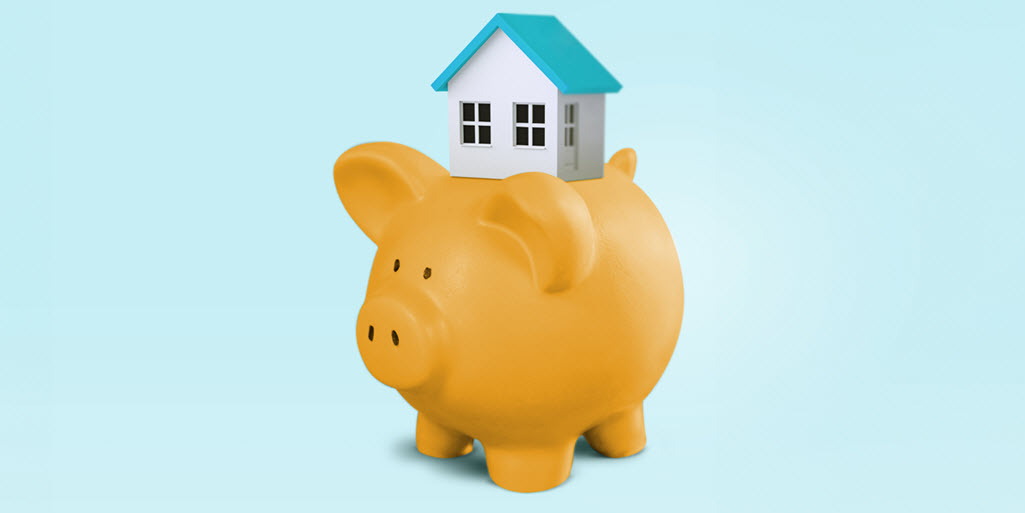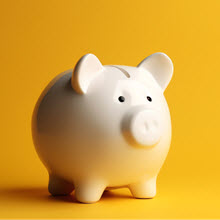Part 1: The basics
What is an FHSA?
The first home savings account (FHSA) is a new savings account introduced in the 2022 Federal Budget to help Canadians save up to buy their first home in Canada starting in 2023.
The FHSA is a registered investment account that allows Canadian residents to contribute up to $8,000 a year to maximum of $40,000 total.
Just like with a tax-free savings account (TFSA), you can hold various investments (what the government calls qualified investments) within an FHSA. Any investment growth and withdrawals are also tax-free but only if you use them to buy your first home (which qualifies under the rules laid out).
What are tax-free withdrawals? Tax-free means you don’t have to report withdrawals from your FHSA as part of your income, and therefore won’t pay tax on them as income if the withdrawal is considered to be a qualifying withdrawal. That can be a real help as you navigate the housing market.
How can an FHSA help you?
The money you put in an FHSA can help you save to buy your first home. The contribution to your FHSA is also tax deductible, which means it can reduce the amount of income tax you pay in the year you contribute and/or claim the deduction on your tax return.
Here’s how that works: let’s say you make $70K a year and contribute $8K to your FHSA. If you claim the deduction, that would lower your taxable income from $70K to $62K. If you’ve already paid tax on the full $70K, you could be eligible to get back some of the tax you paid on your income above $62K.
Any money you make on the investments inside your FHSA is tax-free, as long as it’s invested in qualified investments, and as long as you take it out for what is considered a qualifying withdrawal. A withdrawal is considered a qualifying withdrawal if you are a resident of Canada, you’re a first-time home buyer and you intend to occupy the home as your principal residence within 1 year of buying it. As well, you need to use a specific withdrawal form (see Part 5), and you must have a written agreement in place to purchase or construct a qualifying home before October 1 of the year following the date of your first withdrawal. You also can’t acquire your qualifying more than 30 days prior to your withdrawal.
What kind of homes can you buy with an FHSA?
You can use your FHSA to buy any housing unit in Canada. That includes:
- Single-family
- Semi-detached
- Townhouses
- Mobile homes
- Condos
- Apartments
You can also buy a share in a co-operative housing corporation if:
- it entitles you to possession,
- and gives you an equity interest in a housing unit located in Canada.
Who can open an FHSA?
You can open an FHSA if you’re a Canadian resident aged 18 – 71. However, you need to be the age of majority in your province (so, 19 if you live in British Columbia, New Brunswick, Newfoundland, Northwest Territories, Nova Scotia, Nunavut and Yukon).
You also have to meet the following conditions
- You must be 71 years or younger on December 31 of the year you open your account.
- You have not lived in a qualifying home as your principal place of residence that you owned or jointly owned in the calendar year you open your account, or in the previous 4 calendar years.
And either:
- You have not lived in a qualifying home as your principal place of residence that your spouse or common-law partner owned or jointly owned in the calendar year you open your account or in the previous 4 calendar years.
- You do not have a spouse or common-law partner at the time you open your account.
Part 2: Why open an FHSA with Prospr?
Prospr can help make it easier to buy your home.
Buying your first home involves more than just saving. It means planning out your contributions, choosing your investments, figuring out timelines – not to mention what kind of house you want to buy.
That can feel like a lot – but you don’t have to go it alone.
Combine your FHSA with a custom financial roadmap from Prospr. That’s a plan you can put into action right away to help you know how much to save, how to invest and for how long, as well as when you might be able to make your move and purchase your new home.
Best of all, Prospr can help you get going even if you’re starting with $0. (It’s sort of our thing to help people work towards their financial goals, no matter where they are.)
Part 3: What’s the difference between an FHSA and a TFSA or an RRSP?
The main difference is that an FHSA is dedicated to helping you buy your first home. You can also hold an FHSA for maximum of 15 years, but you cannot hold one after the year in which you turn 71.
Here are a few other key differences:
|
FHSA |
TFSA |
RRSP |
|---|---|---|---|
Who can open one? |
|
|
|
How much can you contribute? |
|
|
|
Are contributions tax deductible? |
|
|
|
Annual contribution deadline |
|
|
|
How much can you take out? |
|
|
|
Are withdrawals tax-free? |
|
|
|
Part 4: What’s the difference between the FHSA and the Home Buyer’s Plan (HBP)?
An FHSA has no limit on what you can withdraw for a qualifying home, and you don’t have to repay it as long as it is a qualifying withdrawal.
The Home Buyer’s Plan is an option for those who hold an RRSP. It allows you to withdraw money from your RRSP, up to $35K per person, towards the purchase of a qualifying home. You then have 15 years to repay that money back into your RRSP, beginning the second year after the year you made your first withdrawal.
Take note: The Federal Budget of April 16th, 2024, proposed to increase the amount that can be withdrawn to $60,000 and that repayment is not required until five years after the withdrawal, instead of the current two years. This has not been made law yet, but it will change the Home Buyer's Plan when it becomes law. You can learn more about the Home Buyer’s Plan on the federal government’s website.
A new home buyer may be eligible to take advantage of both of these options together.
Part 5: Taking money out of an FHSA
To take your money out tax-free, you have to follow the FHSA qualifying withdrawal rules. Basically, you have to meet these five conditions:
- Withdrawal must be made using form RC725, which you can get from the government here, and which you’ll give to the institution where you have your FHSA.
- You must occupy or intend to occupy your qualifying home as your principal place of residence within one year of buying or building it.
- You and/or your spouse or common-law partner must be a first-time homebuyer, meaning you and/or your spouse or common-law partner can’t have owned and occupied a home as their principal place of residence:
- in this calendar year, and
- in the last four calendar years.
- The qualifying home you’re buying was not acquired more than 30 days prior to taking out your money.
- You have a written agreement to buy or build a qualifying home before October 1 of the year following the year of withdrawal.
- You must be a resident of Canada from the time that you make your first qualifying withdrawal from your FHSA until the earlier of 1) the acquisition of your qualifying home, or 2) the date of your death.
If you meet these conditions, you can take out as much as you like from your FHSA, tax-free. You can also split up your withdrawals however you like, but each withdrawal you make must meet these same conditions.
You’ll also have to close your FHSA by the end of the year following the year in which you make your first qualifying withdrawal – i.e., if you made a withdrawal in September of 2023, you’d have to close your FHSA by the end of 2024.
If you don’t meet these conditions, you have two options.
- You can directly transfer the balance in your FHSA to your RRSP.
- You can withdraw the balance. Any amount withdrawn will be taxable as income in the year you withdraw it. A certain amount of withholding tax will apply to the amount withdrawn. You may owe additional tax as a result of the withdrawal but the withholding tax will be treated as tax paid and should reduce the amount of tax owing.
What about transfers to a TFSA?
To transfer from your FHSA to your TFSA, you’d have to make a taxable withdrawal from your FHSA and then a new contribution to your TFSA.
You can read more about transferring money out of your FHSA on the government’s website.
Frequently asked questions
Not if you’ve lived in the home as your principal place of residence in the current year or in any of the four preceding years. You wouldn’t be a first-time home buyer.
Not if you’ve lived in their home as your principal place of residence in the current year or in any of the four preceding years. You wouldn’t be a first-time home buyer.
Yes, so long as you haven’t lived in the home as your principal place in the current year or in any of the four preceding years.
Yes. You can use that money to pay for your down payment and any fees associated with the purchase of a qualifying home.
At that point, you can directly transfer the money to an RRSP or RRIF, without tax penalty. You can also take the money out, but it will be treated as taxable income, and a certain amount of tax will be withheld at the time of withdrawal. And, if you turn 71, your FHSA will have to be closed by December 31 that year. The balance in your FHSA can be transferred directly to your RRSP or RRIF by December 31, or you can withdraw your money. The amount withdrawn will be included in your income for the year you withdraw it. Withholding tax will apply at the time of your withdrawal as well. Additional tax may be payable when your annual tax return is filed, but the tax withheld is considered tax paid.
Some parts of this article originally appeared on sunlife.ca. This article is meant to provide general information only. Sun Life Assurance Company of Canada does not provide legal, accounting, taxation, or other professional advice. Please seek advice from a qualified professional, including a thorough examination of your specific legal, accounting and tax situation.








